Semana Santa or Holy Week is the most important event in Andalucia. Every town, city and village celebrates with processions and brass bands. It is an occasion for social gatherings and ritual and a celebration of some deeply held traditions.
By Nick Nutter | Updated 25 Apr 2023 | Andalucia | Events |
Login to add to YOUR Favourites or Read Later
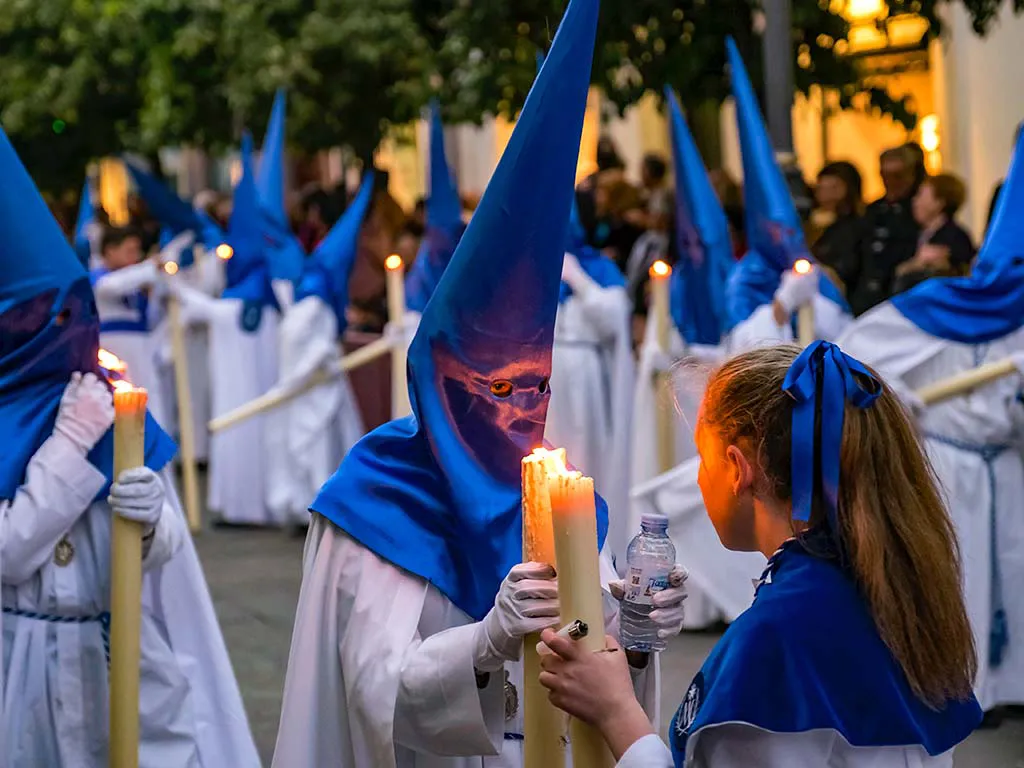
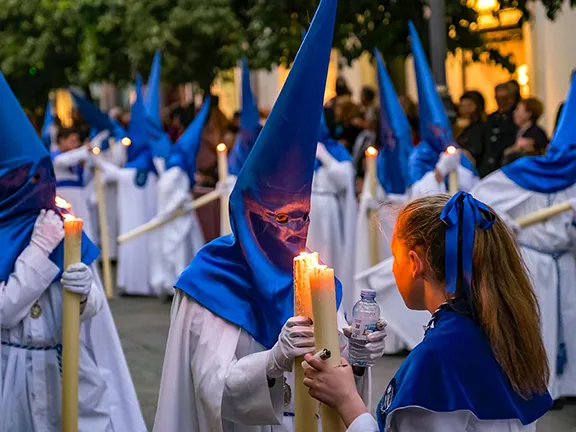
Images courtesy of pixabay.com and unsplash.com
If you are looking for a traditional religious experience, then you must visit Andalucia during Semana Santa. The dates of Semana Santa vary each year according to when Easter occurs. Semana Santa begins on Palm Sunday, the Sunday before Easter Sunday, and lasts until Easter Saturday, and, in some towns, until Easter Sunday.
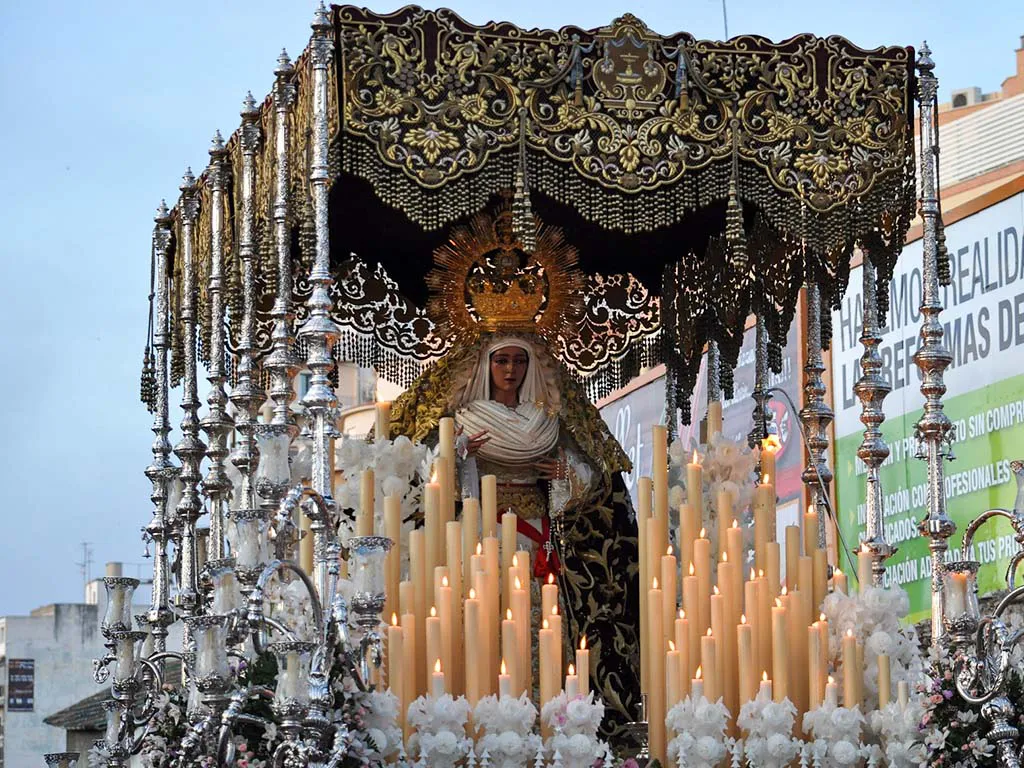

Images courtesy of pixabay.com and unsplash.com
The Semana Santa tradition starts with the Council of Trent. The Council of Trent was the ecumenical council of the Roman Catholic Church that convened from 1545 to 1563, in response to the threat posed to the Catholic church by the Protestant Reformation, headed up by Martin Luther. Key statements and clarifications regarding church doctrine, teaching, and practice were prepared and disseminated throughout the known Catholic world. In Andalucia, organisations called cofradias, religious fraternities, were formed. They were instructed to bring the liturgy to the people and ensure that they based themselves on Catholic doctrines that did not include any pagan traditions. There are three strains of cofradias; De Gloria (the Brotherhoods of Glory), who live and share the faith in community without excessive concern for processional activities, the Sacramentales who worship the sacrament at the altar, and the Penitenciales.
It is the Penitenciales cofradias that are responsible for the Semana Santa processions that take place in all the cities and most of the towns and villages throughout Andalucia. The Penitenciales have their roots in the 14th century flagellants who organised religious processions and sang penitential songs who were united by the Council of Trent. Today, each church can have its cofriadias, sometimes called a brotherhood. Each member of the Penitenciales cofradias is also known as a Nazarenos or penitentes.
Semana Santa is a week during which the statues of Jesus and Mary are brought out of their churches and paraded through their cities, towns and villages. The statues, all works of art, some of which weigh up to six tons, are carried on highly decorated floats, or on the shoulders of Penitenciales. You will still see some of the Penitenciales walking in bare feet to emphasise their penitence.
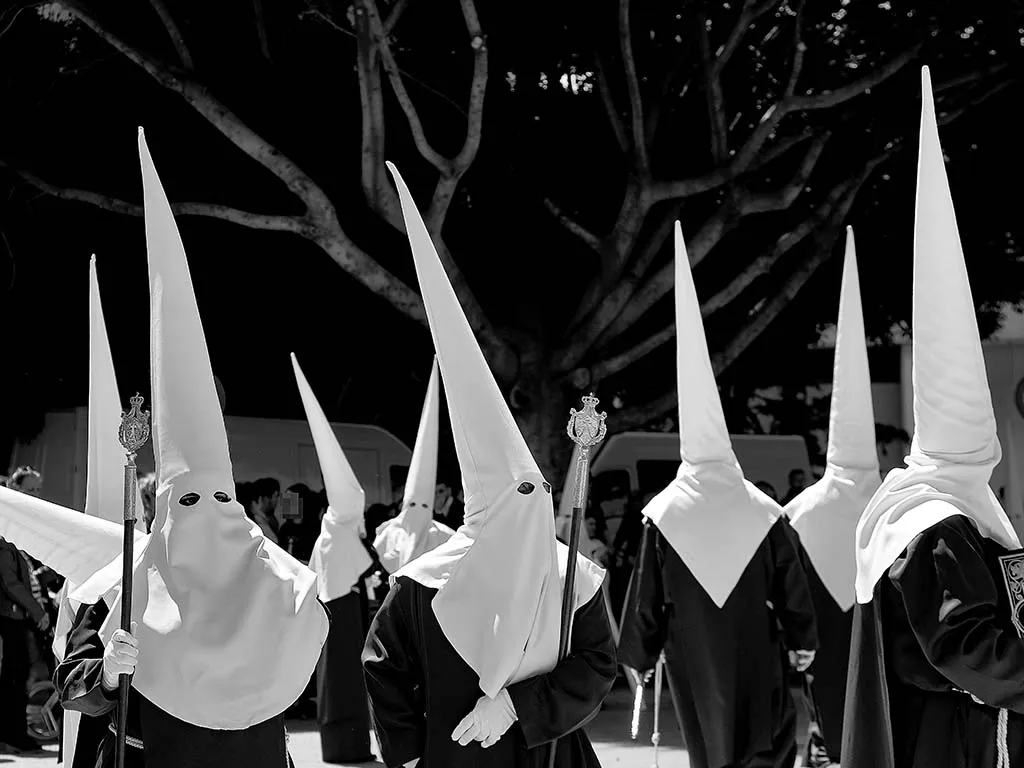
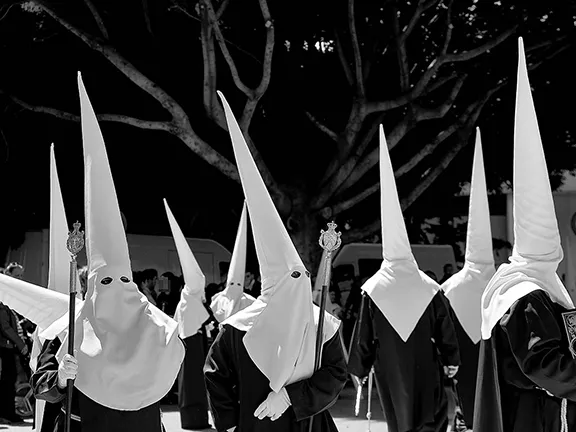
Images courtesy of pixabay.com and unsplash.com
The processions usually follow an order. The huge Cruz de Guia will precede a group holding candles or lanterns. Then the statues will appear, usually two of them, one of Jesus and one of Mary and behind them, the trumpet band. Each procession can have hundreds of people participating and following the statues.
In a city there will be many variations in the statues. Although they all look similar, they all represent different scenes from the gospels related to the Passion of Christ or the Sorrows of the Virgin Mary.
The statues are accompanied by trumpet bands that play particularly mournful music. More Penitenciales carry long candles. All wear some sort of hood, often a tall, pointed affair with slits for eyes that can look rather sinister. Some of the cities have as many brotherhoods as there are churches. Seville for instance has over 60 brotherhoods, some with over 2000 members. In the provincial capitals, the processions can last the full week whilst in smaller towns and villages they may be confined to the Thursday and Friday.
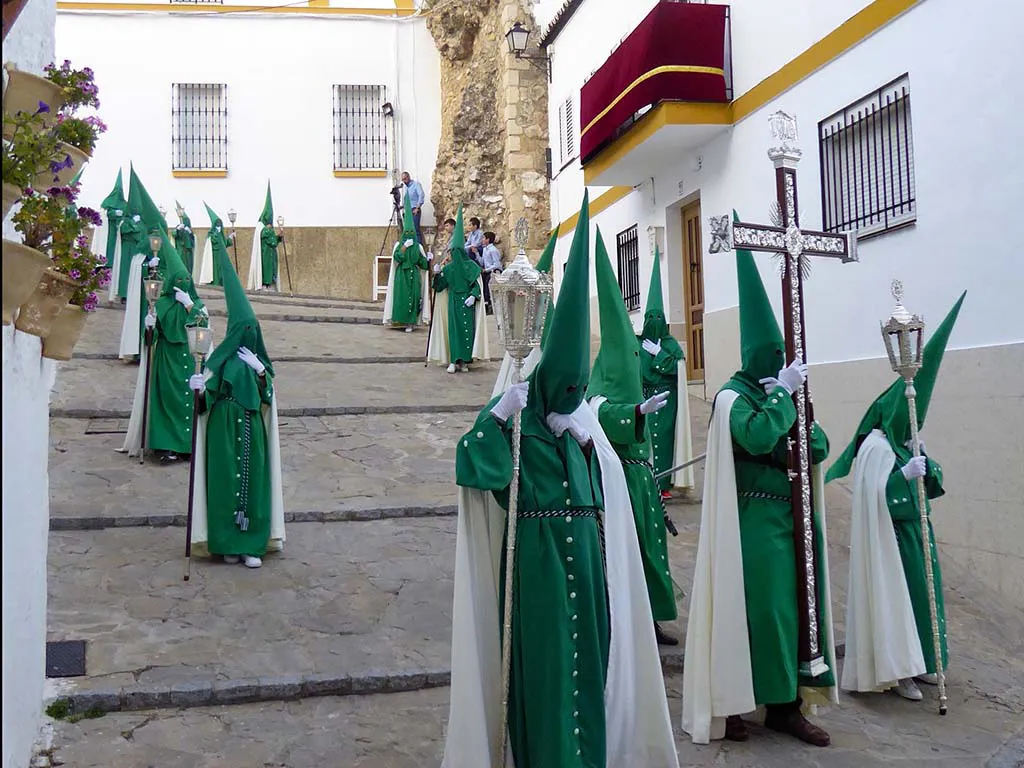
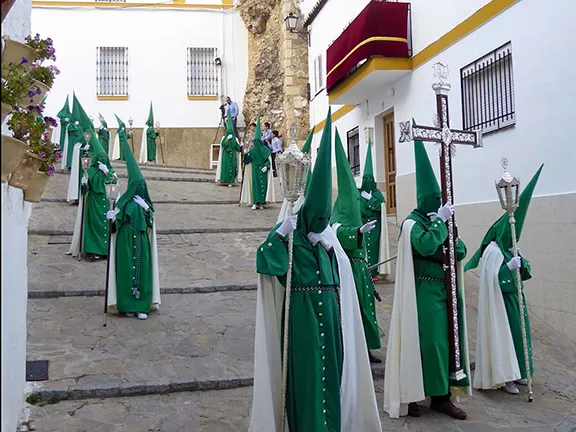
Images courtesy of pixabay.com and unsplash.com
There are 26 brotherhoods in Almeria city, the most important being "La Estrella" "Prendimiento" and "Estudiantes" and the city has gained the award "Fiesta of National Touristic Interest" for the value and quality of its gold, silver and wooden artefacts related to Santa Semana. Almeria is one of the few places where the traditions of the cofradias are being actively encouraged and the numbers of young members are growing.
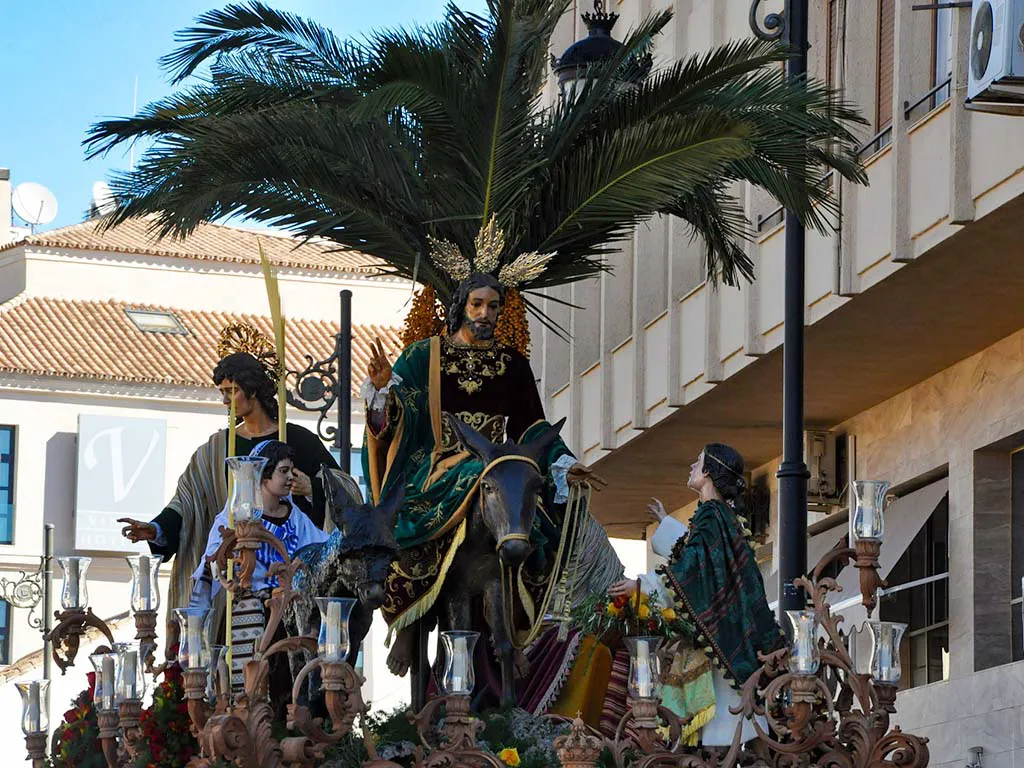
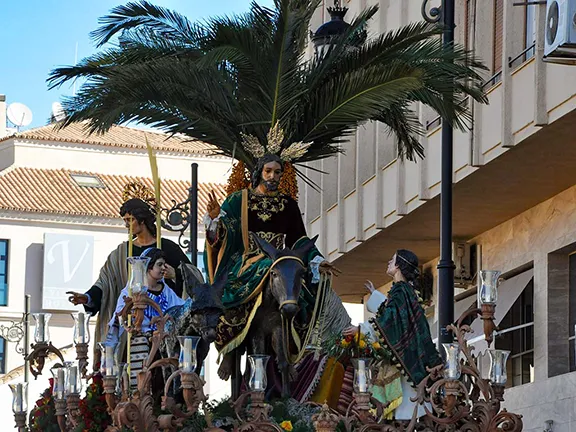
Images courtesy of pixabay.com and unsplash.com
The city of Cádiz likes to party and Holy Week is no exception. The processions are huge and extravagant. In the towns and villages, some of the Semana Santa devotions are worth a visit. The town of Sanlúcar de Barrameda earned the title "Fiesta of National Touristic Interest" in 2002 whilst San Roque, El Puerto de Santa María, Jerez de la Frontera, Arcos de la Frontera and Chiclana de la Frontera all have notable processions.
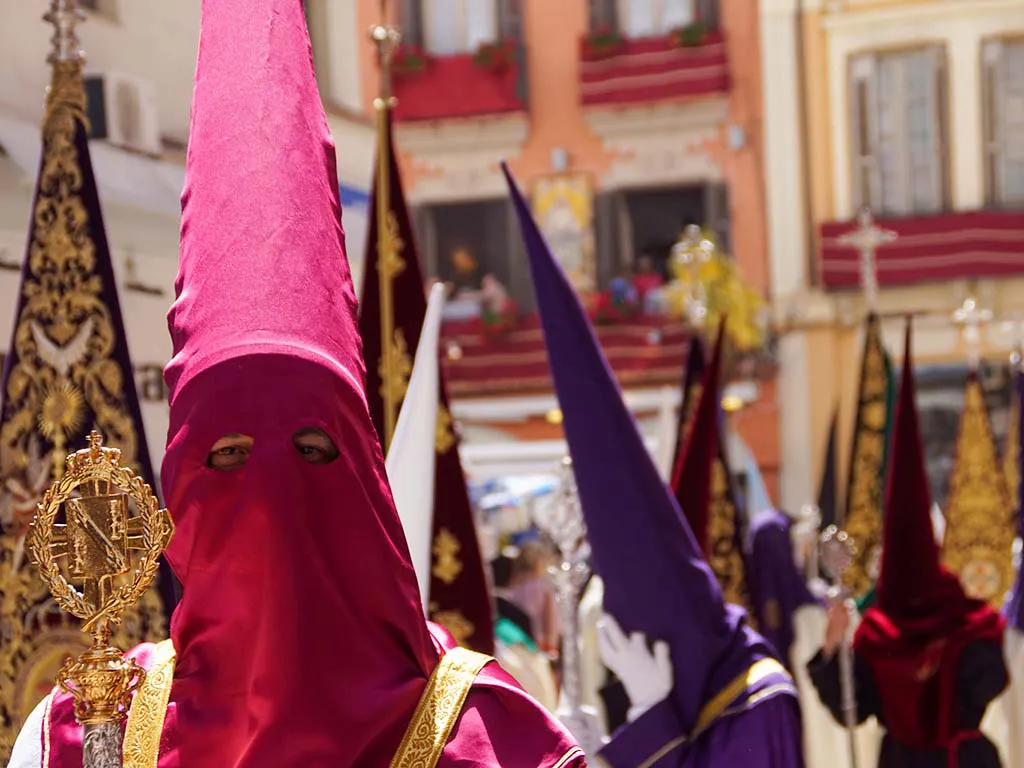
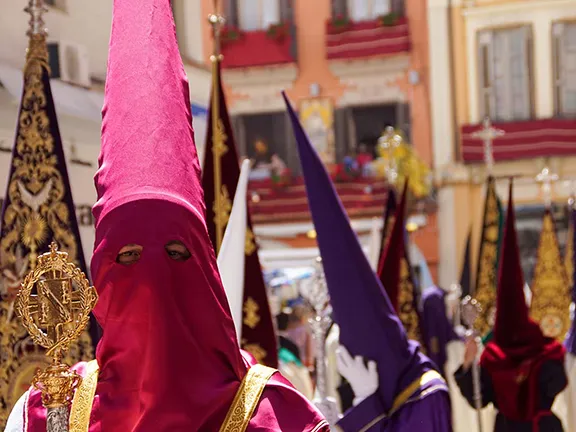
Images courtesy of pixabay.com and unsplash.com
Córdoba holds one of the most popular Holy Weeks in Spain. 37 brotherhoods take part in processions with elaborate "pasos" which represents the scenes of the events of The Passion of Christ. Córdoba also has the coveted stamp of "Fiesta of National Touristic Interest".
In the towns and villages, Cabra, Priego de Córdoba and Puente Genil all put great efforts into their processions.
Granada has gone one better with an award called, “Festival of International Tourist Interest” that was awarded in 2009 for its Holy Week processions. Semana Santa has been celebrated in the city since the reconquest in 1492 and saw a resurgence after the Council of Trent. Today there are 32 fraternities and 34 cofradias controlled by the Royal Federation of Brotherhoods and Brotherhoods of Granada. Loja and Guadix are worth visiting during Semana Santa.
The Holy Week in Huelva are certified as a "Fiesta of National Touristic Interest".
Outside the city the towns of Aracena and Ayamonte are noted for their traditional celebrations during Semana Santa.
Semana Santa in Jaén is the celebration of the passion, death and resurrection of Christ illustrated through the processions made the brotherhoods. In addition to the religious aspect, which makes it the most important event of this nature in the city of Jaén, Holy Week is a socio-cultural, tourist and economic phenomenon of great importance in the city, and is reckoned to be one of the most beautiful in Andalucia. It was declared an Asset of Andalucian Tourist-Cultural Interest in 2006 and a Festival of National Tourist Interest of Andalucia. The processions last the full week.
Málaga city has been celebrating Holy Week for 500 years. The processions are famous throughout the country. Some of the floats weigh more than 5,000 kilos and are carried by 250 members of the Nuestra Señora de la Esperanza brotherhood. The Penitenciales wear purple robes in Málaga and they are followed by women in black, all carrying candles. Unlike in other cities, the Semana Santa processions are not solely solemn. The week includes military parades, one of which is that of the Spanish Legion, which parades the image of Christ of the Good Death together with the Legion's own military band and Honour guard on Maundy Thursday, it is very popular among tourists, locals, and military veterans. Holy Week is full of happiness, noise, cheer, spontaneous saetas (flamenco verses sung at the processions) and applause as the images pass by during an entire week of processions.
Of the towns in Málaga that have notable processions, Antequera stands out.
As the capital city of Andalucia, you would expect Seville to celebrate Semana Santa in style and you will not be disappointed.
Like Málaga, the cofradias of Seville prefer to have a less solemn occasion and you can expect plenty of music, singing and lively bars into the early hours of the morning.
The processions are notable for featuring the "pasos", lifelike painted wooden sculptures of individual scenes of the events that happened between Jesus' entry in Jerusalem and his burial, or images of the Virgin Mary showing restrained grief for the torture and killing of her son. Some of the images are artistic masterpieces of great antiquity. One of the most popular and beautiful images of the Virgin Mary depicting her Sorrows is the Nuestra Señora de la Esperanza de Triana, "La Reina y Señora de Sevilla" (The Queen and Lady of Seville). These "pasos" are physically carried on the neck of costaleros ("sack men", for their distinctive -and functional- headdress). The costaleros, who can number between 24 and 48, are hidden inside the platform of the paso, so it seems to walk alone.